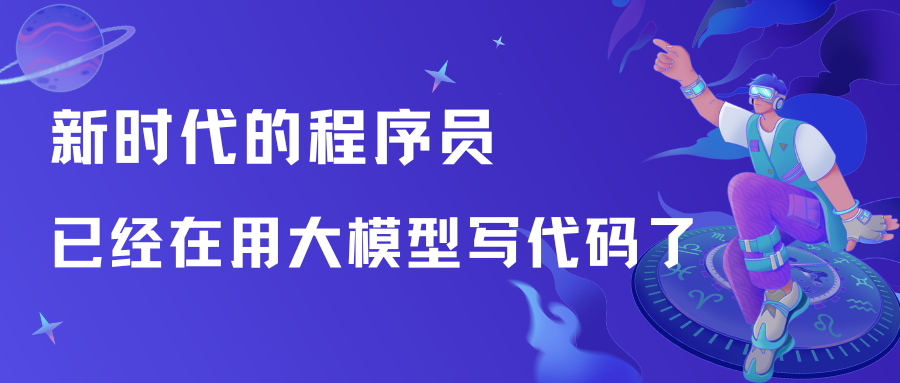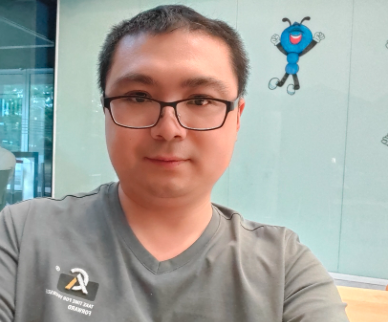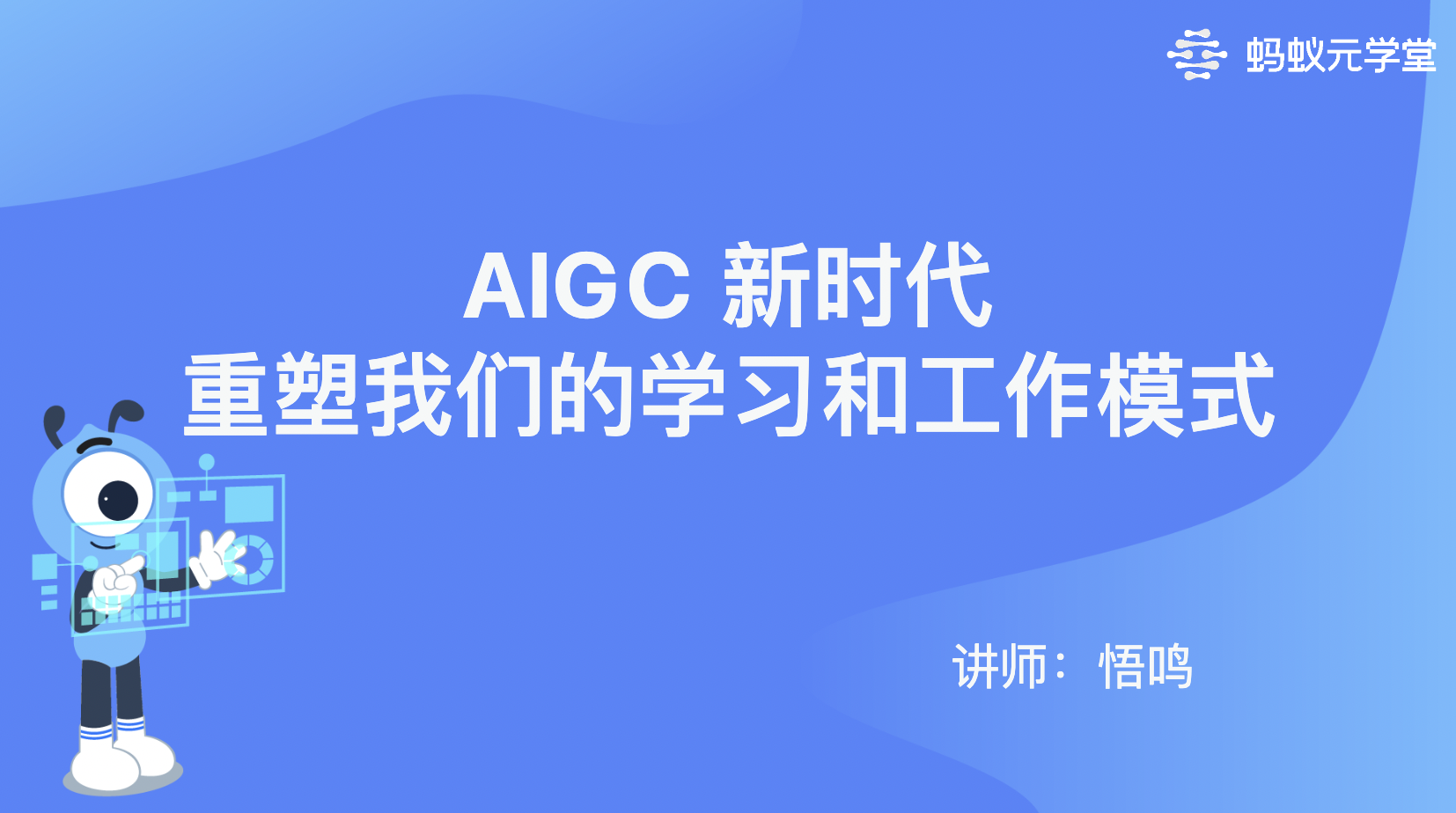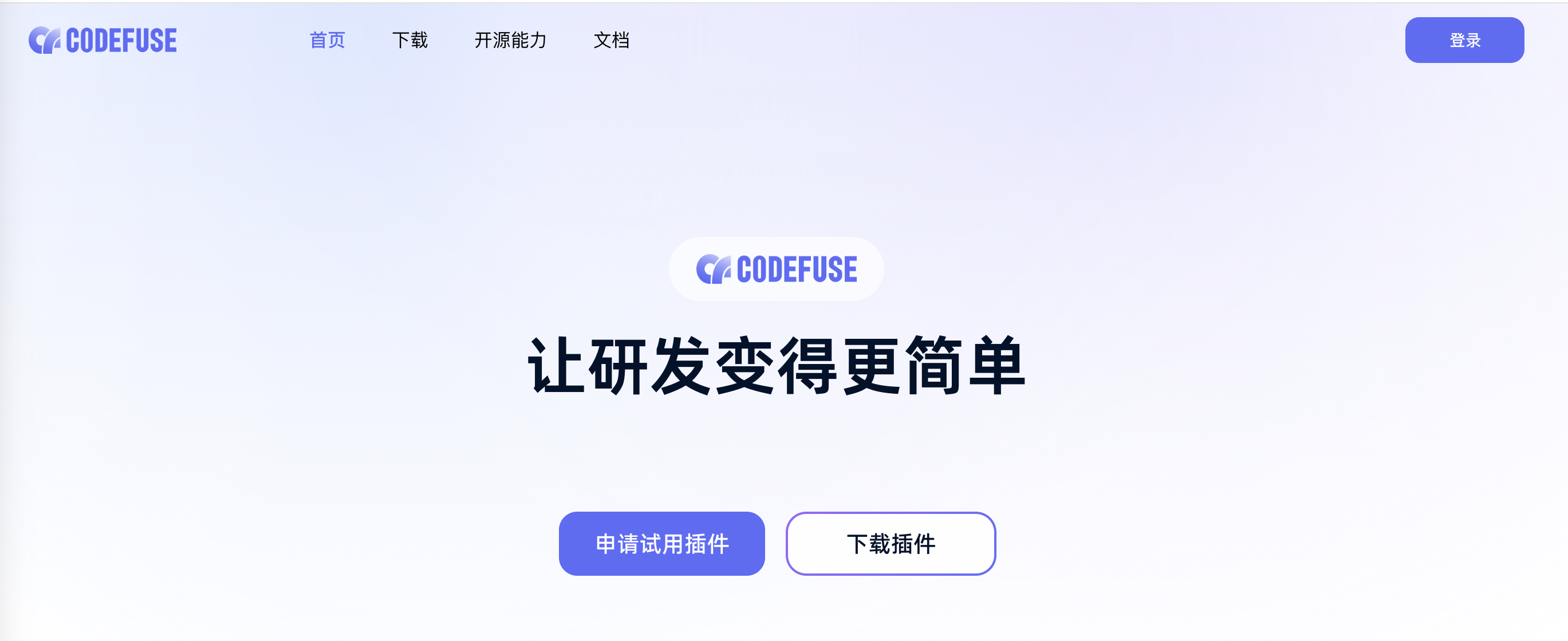
"Click", "click".
Wu Ming entered a keyword on the keyboard, and the code he wanted to enter immediately appeared automatically.
He took a quick glance and felt that there was nothing wrong. He pressed the "Tab" key and the code changed from gray to normal, which meant that the code was adopted and became part of the code he wrote.
This is a common scenario where he writes code recently.
The code that automatically emerges comes from AI predictions, and this magical ability comes from generative AI (AIGC), which has become increasingly popular recently. However, the CodeFuse smart tool he uses is exclusive to programmers and is AIGC . Applications in R&D.
Behind AIGC is the large language model technology that is becoming increasingly popular. Next, let us learn about his story with large model technology.
Get involved with large models
AIGC had a burst of popularity as early as last year. A man who had never touched painting won a painting exhibition award with an AI painting tool. Since then, many people have begun to pay attention to AIGC.
However, it will be early this year for Wu Ming to get involved with large models.
Just after the New Year in 2023, a friend said to him: "There is an AI tool that can not only answer any questions, but can also write code. It's awesome. Go check it out!"
The AI tool mentioned here is actually ChatGPT 3.5, which was just released at that time. Compared with previous AI tools, including its own early version, this AIGC tool is vastly different in intelligence.
Wu Ming was not convinced at first, because he had also considered other AI tools before, but most of them were considered "artificially retarded" and could not get the results he wanted.
At that time, he saw someone in the technical exchange group discussing a problem they encountered. The student who asked the question was puzzled. The other students in the group either didn't understand the content or didn't know the reason. There was no result for a while. Wu Ming didn't understand this technology either, but with the attitude of giving it a try, he submitted the problem to ChatGPT. AI quickly gave suggestions. He forwarded the results to the group, and the classmate quickly solved the problem according to the suggestions.
"My mood at that time was shock." Wu Ming described his feelings this way.
From that time on, Wu Ming began to take the initiative to understand everything about AIGC, including the large language model technology behind it.
Wu Ming's job is Java development. Two years after graduation, he joined Ant in 2021 and became a senior Java engineer. His main daily job is to write code.

In his spare time, he also likes to share. Not only is he a CSDN blog expert, the e-books he wrote have also been ranked among the top 10 downloads in the Alibaba Cloud Developer Community in 2022.
After starting to study large models, he wrote many related articles and was invited by the Ant Technology Learning and Growth Center to conduct a live broadcast with all technical students to share his views on large models and their usage skills.

The more he learned about large models, the more he believed: "The momentum of large models is unstoppable. Only by learning to embrace it can we adapt to the next era."
However, at work, for a long time this year, he did not use AI to write code. This is because the company has strict regulations on external tool services, and using these external tools involves security and compliance risks.
Fortunately, Ant's Bailing model is under intensive research and development, and CodeFuse, an intelligent R&D assistant based on it, was finally launched for internal testing in Ant in June.
When big models meet R&D
Wu Ming has been looking forward to CodeFuse for a long time and applied as soon as it was announced, so he was one of the first users to try it out. How does it feel to try something new?
"Honestly, it didn't meet my expectations," he replied. He then explained that he knew that the CodeFuse that was released at that time was only version 7B, which was 7 billion parameters. Compared with large models with hundreds or hundreds of billions of parameters in the outside world, it is normal for its capabilities to be inferior.
Moreover, at that time, CodeFuse only launched a web version, and users asked questions and obtained answers on the web page, which was inconsistent with programmers' habits of writing code.
However, he still has high expectations for CodeFuse: "The development speed of large models is too fast. Some people say that one day for a large model takes one year for the industry. You cannot look at it from a fixed perspective . I believe that CodeFuse will be able to develop it over time." It’s working normally.”
I have to say that his prediction was very correct. Only 4 months later, CodeFuse, which was put into internal testing again, not only improved the model parameters several times, but also developed an IDE plug-in, allowing developers to use CodeFuse's capabilities at any time when using convenient development tools.
On October 24, after undergoing internal inspection, the CodeFuse IDE plug-in began to invite external testing. Its open capabilities include code completion, code interpretation, code annotation, code optimization, unit test generation, etc.

Among these abilities, Wu Ming's favorite is code completion.
"You know what? It feels so great when the code predicted by the assistant is exactly the same as what you thought!" When talking about this, he couldn't help but beam with excitement: "It's like being connected to the AI. You and the computer work together. Two become one, forgetting everything else.”
In professional terms, this description is actually called "flow", which means that people enter a state of complete selflessness when doing things. In this state, the efficiency of doing things is greatly improved.
Flow is a state that many professionals long for. Some people spend huge sums of money to improve their working environment just to increase the chance of entering a flow state. According to Wuming, R&D assistants based on large models also have the opportunity to put people into a flow state.
However, Wuming regrets that other functions of CodeFuse have not given him such an experience yet. For example, when generating unit test code, the generated code takes a lot of time to modify and adjust, and sometimes it is not as efficient as writing it yourself. An important reason for this is that Ant's code base is too complex and large and requires a lot of special configurations. However, the current AI assistant is not powerful enough to face such a situation.
Of course, Wu Ming also believes that CodeFuse’s capabilities will continue to improve and all problems encountered will be improved or solved.
Wu Ming even imagines that one day CodeFuse can be used not only to write code, but also to do the entire research and development cycle. For example, before R&D begins, you need to discuss the requirements, design the system based on the requirements, and then write the code. After writing the code, you need to review, jointly debug, deploy, operate and maintain, etc. Many times, it is these steps that consume the most time and cause the most problems. If CodeFuse can intervene in these links, it will undoubtedly further improve everyone's efficiency.
In fact, CodeFuse is indeed following these directions, which can be seen from its name as "R&D Assistant" instead of "Code Assistant".
Later in the interview, I also asked him for some tips on using CodeFuse.
Three tips for using AI R&D assistants
" The first tip is to lower your expectations for AI ." Wu Ming told me. Why do you say that?
He explained that today's large models, if compared to people, are equivalent to 8 or 9-year-old children. Although they already have some intelligence, they are still in the early stages.
Nowadays, the external hype about AIGC and large models is like adding fuel to the fire. At a time when it is extremely hot, after all this publicity, many people's expectations for large models have been raised to very high levels. When the answers obtained are not in line with expectations, their flaws will be infinitely magnified, and the attitude will change from extremely favorable to extremely derogatory, and they will be unwilling to try again.
“It takes a lot of trying to get a moment like the one I had, and once you’ve experienced it, you can’t live without it.”
Wuming took CodeFuse as an example. When he first started using code completion, he couldn't always figure out when the assistant would generate the predicted code, and how to write comments to better generate the desired code. It wasn’t until after many attempts that he became comfortable with it and gained some tacit understanding that the AI assistant truly became one with him.
The second tip is to integrate the AI assistant into your workflow . Just like the previous CodeFuse web version, everyone would only test all kinds of weird questions to get wrong answers for fun, but in fact this is not beneficial to themselves, nor does it help to improve large models.
"The code completion of the CodeFuse IDE plug-in is useful because its predicted code is automatic, and then you only need to press the Tab key to adopt it. In this way, you will naturally use it to work and write normal code ." Wu Ming explained.
Therefore, when you encounter a new AIGC tool, you might as well think about whether it has the opportunity to help you in some aspect of your work. Only in this way will you use it.
The third skill, Wu Ming believes, is the courage to try . The field of large models is developing so fast that even the same AI tool such as CodeFuse will have completely different capabilities in a few months. If you don't look at these tools from a developmental perspective, the limitations you will receive will be very large.
Wu Ming gave an example. He has communicated with some colleagues who use CodeFuse. Many people have only used the code completion function of CodeFuse and don't even know that it has a right-click menu and sidebar. If you use these functions, it might be helpful in one of your scenarios.
Another point is to have the courage to try AI tools outside your own field of expertise. For example, designers can use CodeFuse to carry out some simple development, or combine different AI tools based on existing AI capabilities to achieve new things. Once the things made are valuable, under the current trend, It is possible to achieve unexpected success.
The future is here
Recently, Wu Ming had a problem.
Specifically, he was hesitant to teach his 8-year-old nephew about large models.
There is a school of thought on the Internet that believes that early exposure to big models will destroy young people, because big models omit the thinking process and give you the answer directly. If things go on like this, once the big model is lost, these people will be useless and unable to do anything with their own abilities.
But Wu Ming believes that there are two sides to the matter. For example, when he used AIGC tools to learn new knowledge, he found that with the help of these AI tools, his learning efficiency was much higher. Once you learn these things, they won't disappear, so why not use more effective methods?
"The difference between using a large model or not is whether you think about it or not." When Wu Ming uses CodeFuse, he does not mindlessly accept the code completion content, but only uses it after confirming that it is correct. In this process, he The brain operates at high speed.
In Wu Ming's imagination, the final appearance of the large model and AI may be like MOSS in "The Wandering Earth 2", and this trend is irreversible.

"Those who use large models will become more efficient and will defeat those who do not use large models in the competition. Even organizations will be no exception. Therefore, large model technology will definitely become popular." Wu Ming has a personal experience. The one he created In the developer learning and communication group, everyone has been quieter since the release of various large models, because if you encounter problems, you can just ask the AI assistant directly, which is more efficient and convenient than communicating in the group.
With this belief, he became a dedicated supporter of large-scale models, and under his leadership, colleagues around his desk have all used CodeFuse.
The future is here, and I hope none of us will miss this feast.
CodeFuse mentioned in the article is currently being invited for testing by developers. You are welcome to submit applications on the official website: https://codefuse.alipay.com/
